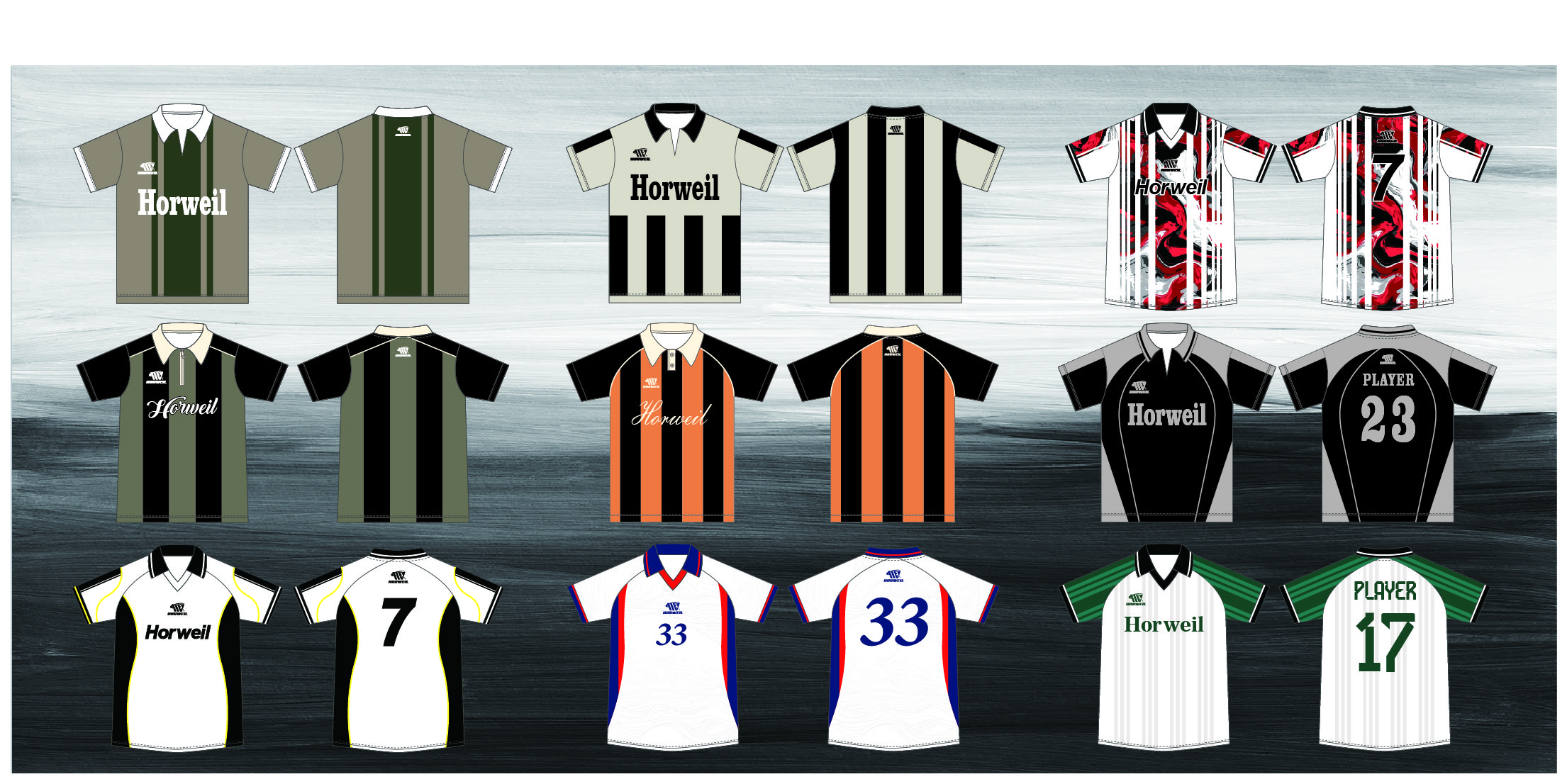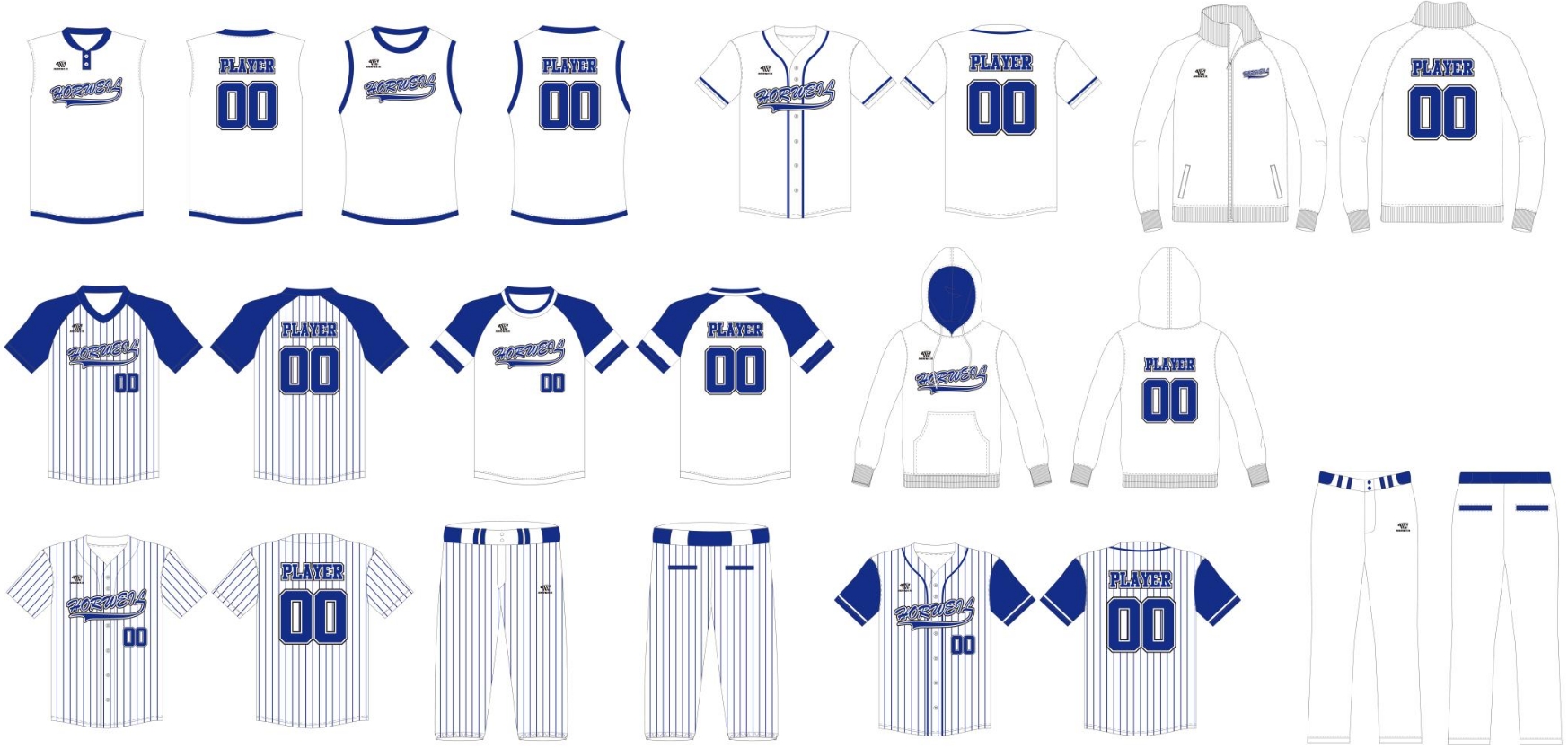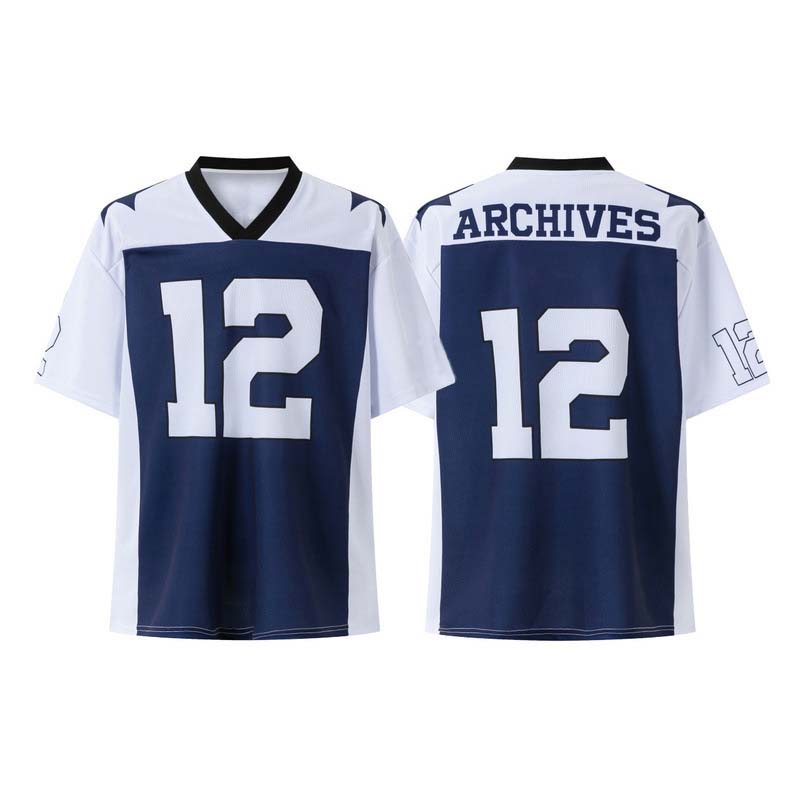

Differences Between Football Jerseys and Basketball Jerseys
Football and basketball are two of the most popular sports worldwide, and each has its own unique style and requirements for the jerseys worn by players. While both are designed for athletic performance, the design, fit, and functionality of football jerseys and basketball jerseys differ significantly. Here’s a breakdown of the key differences between these two types of sportswear.
1. Design and Fit
- Football Jerseys: These jerseys are typically designed to be slightly looser to allow for the physicality of the sport, where players may be involved in intense tackling and collisions. They offer room for pads and protection gear underneath. The fit is usually a bit more relaxed, with longer sleeves to provide extra coverage.
- Basketball Jerseys: In contrast, basketball jerseys are often more fitted and designed for movement, agility, and comfort during fast-paced running and jumping. They have a sleeveless design to allow for maximum arm mobility, which is crucial for shooting and passing. These jerseys are generally shorter, extending just below the waist.
2. Material and Fabric
- Football Jerseys: Football jerseys are made from durable, moisture-wicking materials such as polyester to help manage sweat and provide comfort. The fabric is typically thicker to accommodate the wear and tear from physical contact and the rough nature of the game.
- Basketball Jerseys: Basketball jerseys are also made from moisture-wicking fabrics, but they are generally lighter and more breathable to keep players cool during intense, high-cardio games. The fabric is designed to allow for better airflow and sweat evaporation.
3. Functionality and Protection
- Football Jerseys: Given the nature of football, these jerseys are often worn over padding, which includes shoulder pads, rib protectors, and helmets. The jersey needs to allow for the fitting of this protective gear while still providing mobility.
- Basketball Jerseys: Basketball jerseys, on the other hand, don’t require padding, as basketball is less focused on physical contact than football. The main goal here is to provide freedom of movement for activities like jumping, shooting, and dribbling.
4. Length and Sleeves
- Football Jerseys: The sleeves of a football jersey typically extend to the elbow or beyond, as players need arm coverage to protect themselves from abrasions or the elements. The body of the jersey is also longer, often reaching just above the waist.
- Basketball Jerseys: Basketball jerseys are sleeveless and have a much shorter length, typically just reaching the top of the shorts. This allows players to move freely and without restriction during games.
5. Style and Aesthetics
- Football Jerseys: Football jerseys often have a more rugged and detailed design with team logos, numbers, and sometimes padding integrated into the jersey. The designs tend to be more complex and include more layers and stitching.
- Basketball Jerseys: Basketball jerseys tend to have a more minimalistic and streamlined design, with large, bold numbers and team logos. The focus is on aesthetics that complement the sleek, quick-moving nature of the game.
6. Usage
- Football Jerseys: These jerseys are designed for contact sports, so they need to be tough and offer enough space for undergarments like shoulder pads, which provide impact protection.
- Basketball Jerseys: Since basketball is a non-contact sport, the focus is on lightness, comfort, and breathability. The jerseys are designed for flexibility and freedom of movement.
Conclusion
While both football and basketball jerseys serve the same basic function of providing comfort and support during gameplay, the key differences lie in their design, material, and purpose. Football jerseys are built to be more durable and protective, while basketball jerseys are designed for mobility and agility. Whether you’re playing football or basketball, choosing the right jersey that suits your sport’s needs is crucial for both performance and comfort.









